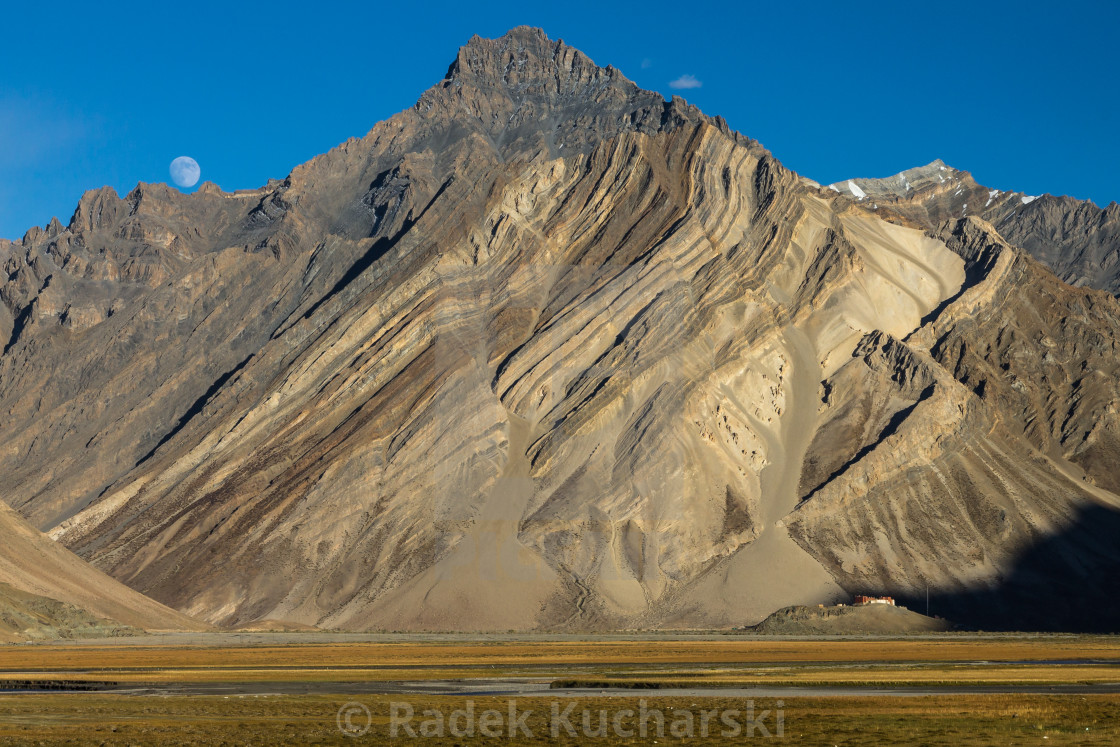
Zanskar Mountains cliff with clearly visible sediment rock layers, Rangdum Gompa and the rising moon
Description
Impressive cliff in the Zanskar Mountains of the Himalayas with folded strata (rock layers) of the sediment or metamorphic rocks. There is the monastery of Rangdum below the rock face on a small hill above the valley bottom on the right-hand side and the rising moon above. The rock layers had been formed in the Paleo-Tethys Ocean before the Indian sub-continent hit the rest of Asia and the Himalayas were uplifted. In the process, which continued for millions years when the Indian Plate (Indian Subcontinent / South Asia) was drifting north, these sediments were folded. The ocean’s name, where these rocks were formed, gave name to this part of the Himalayas: Tethys Himalaya, and Zanskar Range belong to them. Rangdum Gompa – the Tibetan Buddhism, Gelug monastery visible here – is often called the last monastery of Zanskar, although it is located in the Suru Valley and Zanskar begins beyond Pensi La at its upper end. The majority of villagers from all the settlements below this point down towards Kargil follow Islam, to the contrast of the surroundings of Rangdum and Zanskar. Photographed in late summer; an evening view. Union Territory of Ladakh, India.
Details
3948 x 2632px
Formats
Digital Download
Printed Product
Buy
From $7.09